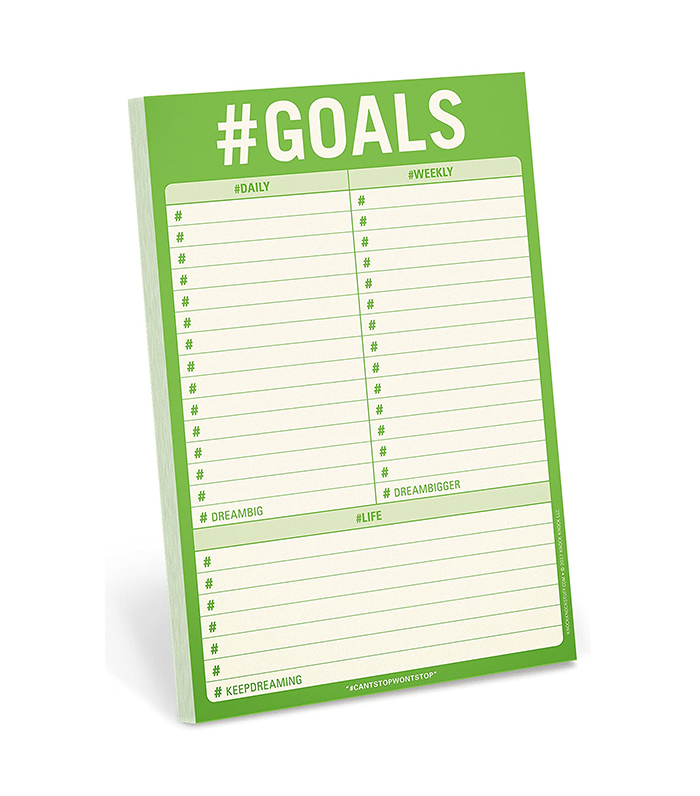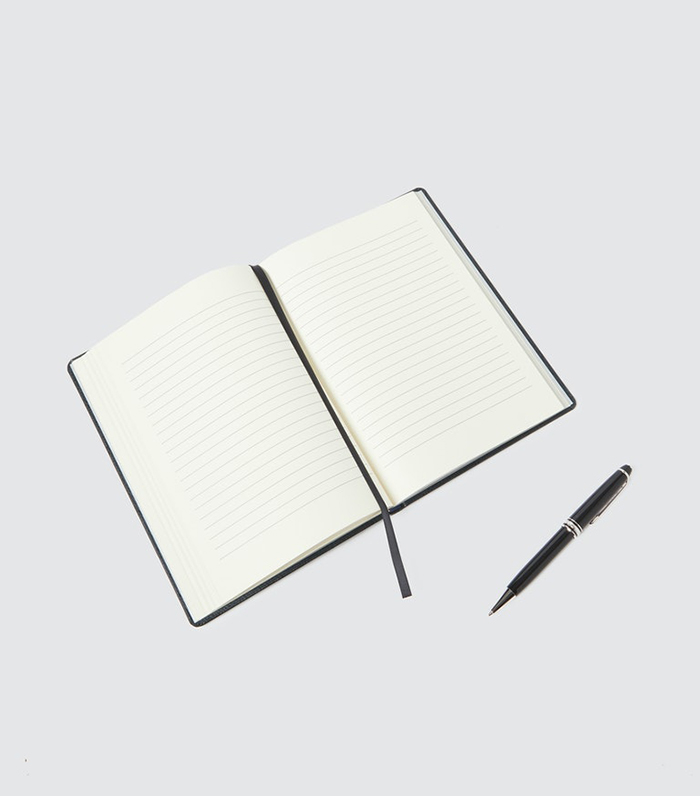How to Quit Those Unhealthy Bad Habits Once and for All

Chances are you have a bad habit or two. That's okay. No one's perfect, and it's all part of being human. And these bad habits aren't the same across the board for everyone. Some might be serious, while others can be more minor. But either way, a bad habit is just that—not good for you and meant to be broken.
"Bad habits are behaviors or actions that affect us or others in a negative way," explains Talkspace therapist Cynthia Catchings, LCSW-S. "The best way we can recognize them is to pay attention to our actions. If they are causing us or others harm in our personal or professional life, chances are they probably need to be replaced."

Here's the thing, though: Anyone who's ever tried to break a bad habit knows how difficult it can be. Whether it's biting your fingernails, going back to your ex over and over again, smoking, etc., it's hard to completely cut it off because it's something that is probably so ingrained into your brain and lifestyle.
The good news is it's not impossible to quit a bad habit. The bad news is, well, it's going to take a lot of work, and you might have a few slipups along the way. It can be a time-consuming process for sure, but just think, when all is said and done and the habit is officially gone from your life, how much better you'll feel.
To explore the topic of bad habits more and figure out how to even begin cleaning them out of your life, I spoke to Catchings and Sarah Powers, LCSW, a therapist at the women's health platform Tia, to get their advice.
How to Recognize Bad Habits
First things first, you're going to want to pinpoint the bad habit. Some might be easier to spot than others, but there are some steps that both Catchings and Powers recommend.
Think About Your Friends and Family

This can help you look at something from a different perspective. "An easy way to recognize or pinpoint a bad habit is thinking about your best friend or family member engaging in that activity," Powers says. "Would you recommend or encourage a friend to do it? It's much easier to give other people advice, and for that exact reason, it can be helpful to think about a bad habit as if it were a friend you were advising. If you wouldn't encourage a friend to engage in that particular behavior, perhaps the same goes for you."
Ask Yourself Some Questions

Put on your detective cap and ask yourself some questions—and be honest with yourself because it's the only way to find those bad habits and REALLY understand how they're affecting your life and what you need to do to get rid of them.
Catchings shares these common questions when considering whether something is a bad habit or not:
-Has the frequency of the habit heightened, affecting your personal life?
-Are you losing sleep over it?
-Have you become over-selective with your eating, drinking, or other activities?
-Is your fatigue or lack of energy more apparent?
-Is every relationship you have unstable or destructive?
-Is the habit of making it difficult for you to function throughout your day?
-Are other people mentioning that your habit is taking the best of you?
-Are you spending too much money on your habit?
-Have you lost friendships or relationships over your habit?
Be Mindful of Some Hidden Habits

Bad habits could be hidden in plain sight or disguised as something else. Keep your guard up for those. "Some bad habits are difficult to identify because they often masquerade as moments of 'doing good,'" Powers explains. "One example of this tendency might be a person who constantly overextends herself to her family and friends. Although her friends and family receiving the support might experience this behavior as welcome, her acts of service might also be a type of bad habit in which she is neglecting her own self-care by spending all of her time on the needs of others."
Talk to Others

Asking for input from your friends and family can help you recognize something you didn't realize about yourself, but both Catchings and Powers say you should tread carefully here.
"It helps to talk to friends, family, or loved ones about recognizing these habits when they are safe—meaning they should be supportive and caring," Catchings says. "Sharing information in a hostile environment can be detrimental. Tension is created when we're not ready to accept help or to change ourselves."
Powers echoes that sentiment, adding that your loved ones can provide support in helping you break these habits, but only to some extent. "Sometimes friends and loved ones can help remind you in a moment of weakness why you don't want to engage in a habit," she says. "But others might get frustrated hearing about the same issue over and over again and not understand that breaking bad habits takes time. If you notice friends or family starting to seem frustrated, it might be time to seek professional help."
How to Break Bad Habits
Once you've identified the habits you want to change, you can start to put some plans in motion to get them out of your life. Below are some ideas, but keep in mind that they're not one-size-fits-all, since every person and their circumstances are different.
Accept That You Need to Break It

It all starts with coming to terms with the idea that the habit is bad and you need to break it. "You recognize a bad habit when you start feeling the consequences of its effect," Catchings says. "Realizing it is the first step. You need to be ready to recognize and then accept that you need help and that is the most challenging phase of getting rid of a habit."
Lower Your Stress Levels

Stress might cause you to revert to certain habits. Catchings suggests working on relieving your stress with the help of a professional or a friend. Knowing what your triggers are or what makes you keep going back to those habits can help you manage the situation.
Know It Will Take Time

It's not going to happen overnight, and being aware of that can make the experience easier for you. "Very few people are able to identify a bad habit and drop it immediately," Powers says. "If it was that easy, we wouldn't be pulling our hair out or reading self-help blogs. In reality, it's really hard to stop a bad habit, even after you've recognized it as such. The key? Set small goals. Take baby steps."
And speaking of goals…
Set Clear and Realistic Goals

Catchings says you should be active and proactive. This can help you keep your eyes on the prize (breaking the habit). Setting goals can help, but make sure they're doable so you're not setting yourself up for an enormous amount of pressure or disappointment. "Try cutting down on how often you do the bad habit with realistic goals," Powers says. "For example, instead of checking your ex-boyfriend's social media every hour, what if you only checked three times. And after a few days of successfully only checking it three times, cut down to two, and then one, and then eventually not checking it at all."
Quit the Negative Self-Talk

Be kind to yourself and try to keep it positive. Powers says it's easy to fall into the trap of negative self-talk when you're working to shed a bad habit. "To avoid going down the rabbit hole of self-deprecating statements and thoughts, try to approach your thoughts with empathy rather than anger," she suggests. "As humans, we generally don't respond well to yelling—and yelling at ourselves is no different. Try talking to yourself like you would speak to a friend or even to a younger version of yourself. Instead of expressing judgment and blame, try approaching yourself with empathy and curiosity."
Accept Help

Sometimes you can't do it alone, and that's more than okay. "Do not avoid accepting help," Catchings says. "Sometimes we need someone to walk next to us when we are having a difficult time."
Consider Your Environment and Routine

What you do daily, and who and what you surround yourself with. can make it harder for you to drop a bad habit. "Do not continue spending time with the people that enable you or that have the same habit," Catchings says. "If you cannot change your environment, try to spend more time in other areas doing different activities that benefit you."
Replace the Bad Habit with a Good One

If you're going to do a swap, make sure it's healthy and helpful for you. "For example, instead of looking at your ex-boyfriend's social media every night before bed, a healthy replacement could be journaling," Powers says. "It might not be that simple, and you may need to integrate healthy habits into the bad habit. For example, if you feel like every time you drink alcohol you end up drinking too much, try having a glass of water after every alcoholic beverage. Or another example would be if your bad habit is making negative comments, try saying something you feel grateful for after any negative statements."
Get Creative

There are some ways you can "trick" your brain to let go of these habits. Catchings suggests using your imagination to strengthen your newer, better habits. So try things like reframing your thoughts, creating a dream board and reflecting on your goals daily, imagining yourself not having the bad habit and doing what you want, and rewarding yourself for wins (even if they're small).
Remind Yourself Why You're Doing This in the First Place

Catchings says reminding yourself of why you started this and what your purpose is can help you along the way and also keep you from falling back into the bad habits once you've broken them.
Identify Triggers If You Slip Up

Powers reminds us that no one is perfect, and it's normal to fall off the wagon. "If you do fall back into a bad habit, try to identify if there was a trigger that spurred you to re-engage your habit," she recommends. "This awareness can help you prepare the next time something triggering comes up. For example, if you know that every Valentine's Day, you get sad and drunk-text all your ex-boyfriends, make a plan to hang out with your Galentines and have no phones allowed. There is no way to ever ensure you will never engage in a bad habit again, but what you can do is prepare and ensure you have the necessary support to get you through whatever lies ahead."
Next up: 30 Things That Can Instantly Boost Your Mood
Disclaimer
This article is provided for informational purposes only and is not intended to be used in the place of advice of your physician or other medical professionals. You should always consult with your doctor or healthcare provider first with any health-related questions.
Sarah is lifestyle writer and editor with over 10 years of experience covering health and wellness, interior design, food, beauty, and tech. Born and raised in Los Angeles, she attended New York University and lived in New York for 12 years before returning to L.A. in 2019. In addition to her work at Who What Wear, she held editor roles at Apartment Therapy, Real Simple, House Beautiful, Elle Decor, and The Bump (sister site of The Knot). She has a passion for health and wellness, but she especially loves writing about mental health. Her self-care routine consists of five things: a good workout, “me” time on the regular, an intriguing book/podcast/playlist to unwind after a long day, naps, and decorating her home.


